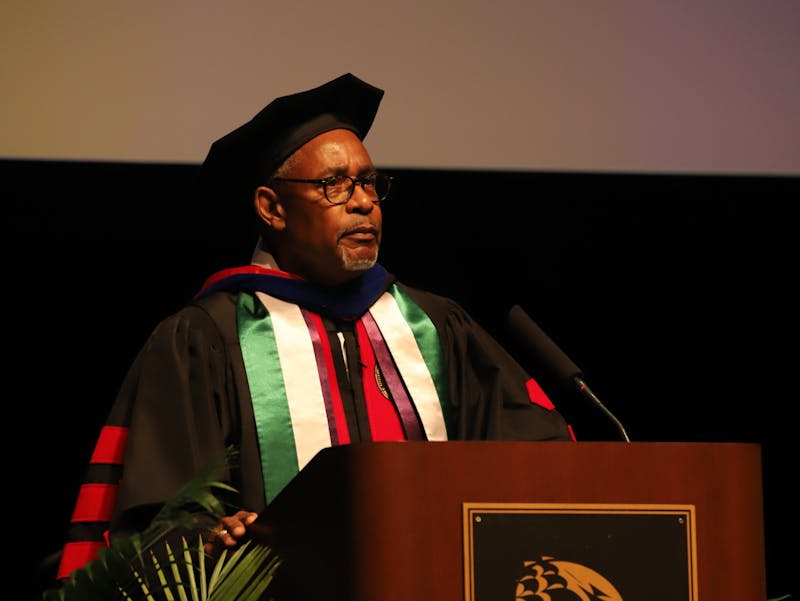A Fulbright-Nehru scholar shared his experiences living and teaching overseas during a lecture at Shippensburg University on Thursday.
SU mathematics professor Luis Melara met with students and faculty in the Dauphin Humanities Center to discuss his experiences living in India for six months. Melara had first developed an interest in Asia and its culture early in his career. This, coupled with his interest in teaching mathematics to students, prompted Melara to apply to become a Fulbright scholar and teach students abroad.
“In the past I’ve interacted with many graduate students and faculty that have originated from Asia,” Melara said.
In 2016, Melara was accepted into the Fulbright program and chosen to spend the entirety of the spring semester in Bhubaneswar, Odisha, India.
“I was very successful and very grateful that the Fulbright program offered me a scholarship,” Melara said.
Throughout the six months he was in India, Melara and his wife visited landmarks such as the Taj Mahal, the Basilica Bom Jesus and the India Gate. However, Melara said certain cultural differences, such as Indian men holding hands to cross the street, were particularly enlightening in comparison to American customs.
“I was there to teach math, so I wasn’t expecting to deal with those kinds of situations,” Melara said.
After World War II, Indian businessman and administrator Sir Ardeshir Dalal set out to create a heavier technological emphasis throughout India. As a result, India has developed 17 technology schools throughout the country, according to Melara.
In India, Melara said only two tests are administered to incoming students. However, because of the competitiveness of the program, the acceptance rate for one of India’s technology schools is less than one percent. According to Melara, 1.5 million students apply to these colleges every year, but only 8,000 students get accepted.
Melara said students at ITT Bhubaneswar did not own textbooks in most cases, and students were only obligated to take two exams throughout the course unless a professor chose to assign homework and quizzes.
Despite certain educational aspects that Melara believed India was lacking, he said the students he taught throughout the semester were just as eager to learn as American students. Furthermore, there are more science, technology, engineering and math students that originate from India than from any other country, according to Melara.
“The students were very enthusiastic to learn, this was considered the cream of the crop in India,” Melara said. “There was a really strong sense of community. It was noticeable to me before they even started working.”



The Slate welcomes thoughtful discussion on all of our stories, but please keep comments civil and on-topic. Read our full guidelines here.